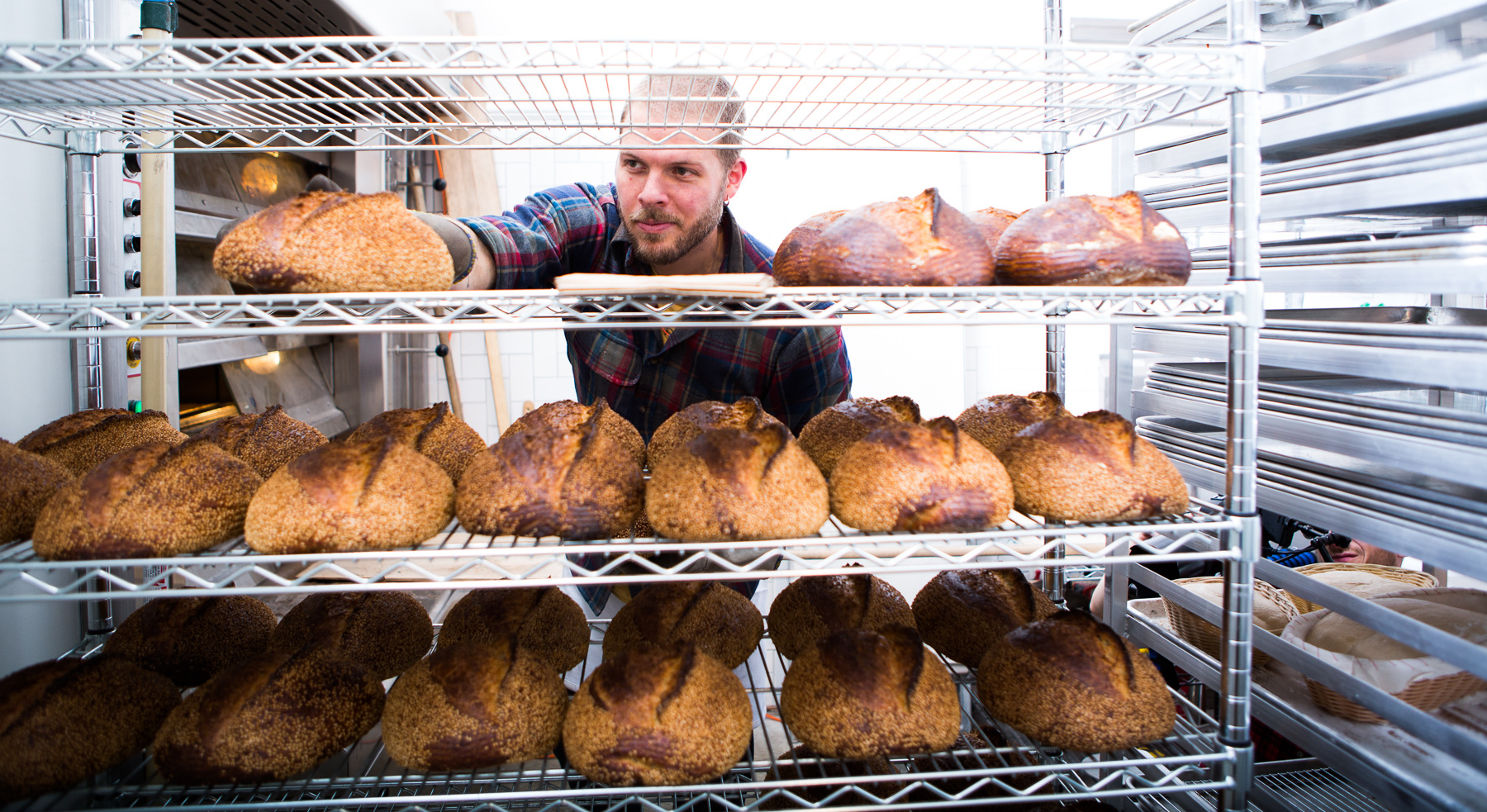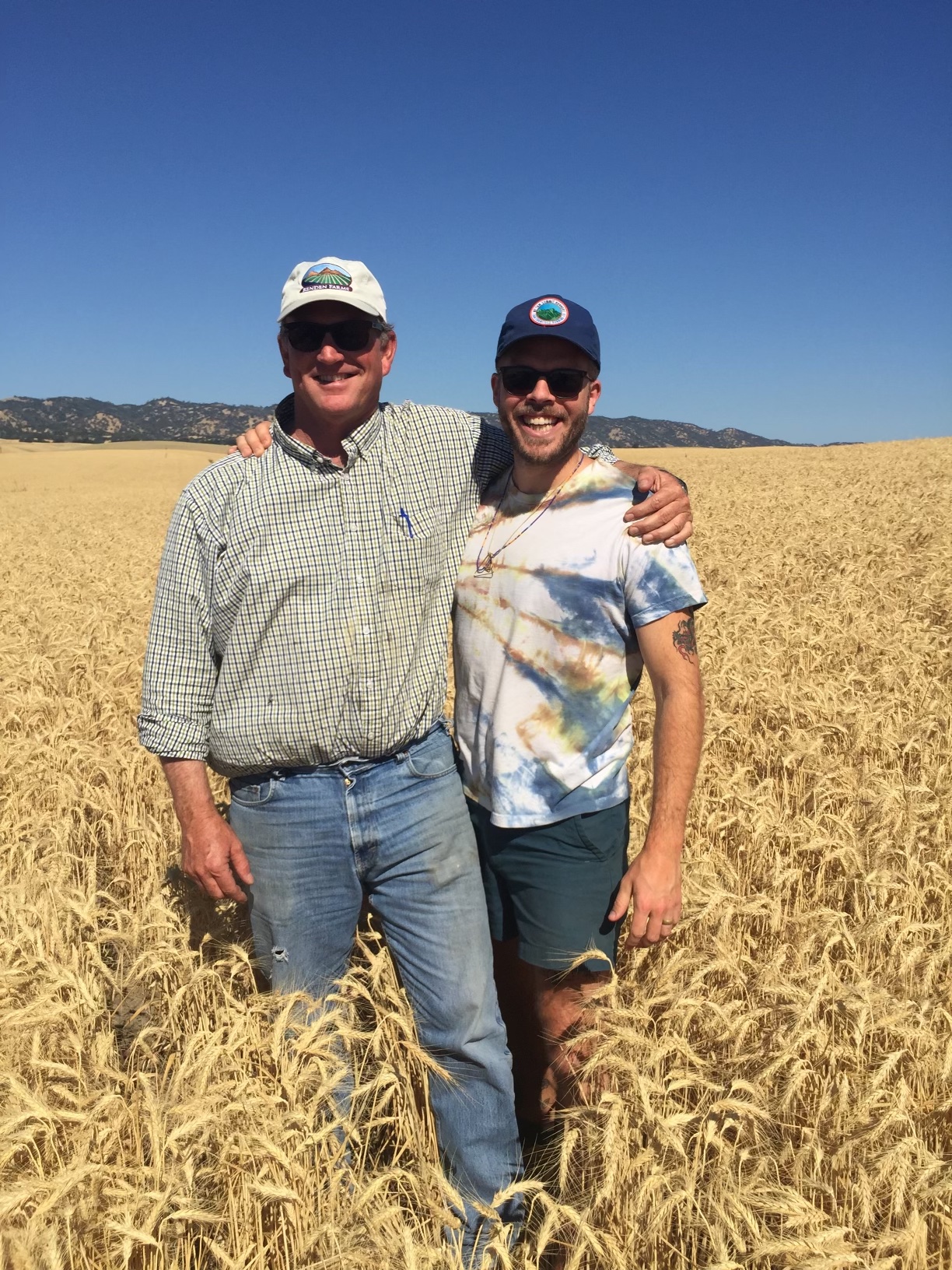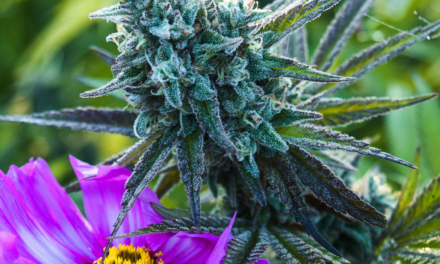California is well known for its abundant agriculture industry, accounting for 12% of the nation’s agricultural sales and producing over 400 different commodities. While wheat accounts for just under 3% of the state’s harvested cropland, a local grain economy has given the crop new significance.
Many crops like apples or tomatoes can go directly from the field to supermarket shelves. But wheat requires a more complex supply chain that involves triangular dependencies between farmers, millers, and bakers. The integrated system transforms a wheat kernel, called a wheat berry, first into flour and then into commodities like bread and pasta. Breaks in the supply chain caused by climate change, natural disasters, or fluctuations in demand, threaten the entire system. This is especially problematic for consumers who receive 20% of their calories from wheat, on average. By localizing the interdependent supply chain, businesses throughout the Bay Area are creating a resilient system that emphasizes soil health, climate resilience, and nutrition.
The local grain economy starts with farms like Tule Farms, run by Fritz Durst in Woodland, California. Tule Farms was started by Durst’s great grandfather and has a history of soil erosion that dates back over 140 years. He attributes this erosion to heavy tillage, a planting style that turns the top few inches of soil to form a planting bed.
“I grew up with a lot of severe erosion,” Durst says. “The water puddled up and ran off, it didn’t go into the soil.”
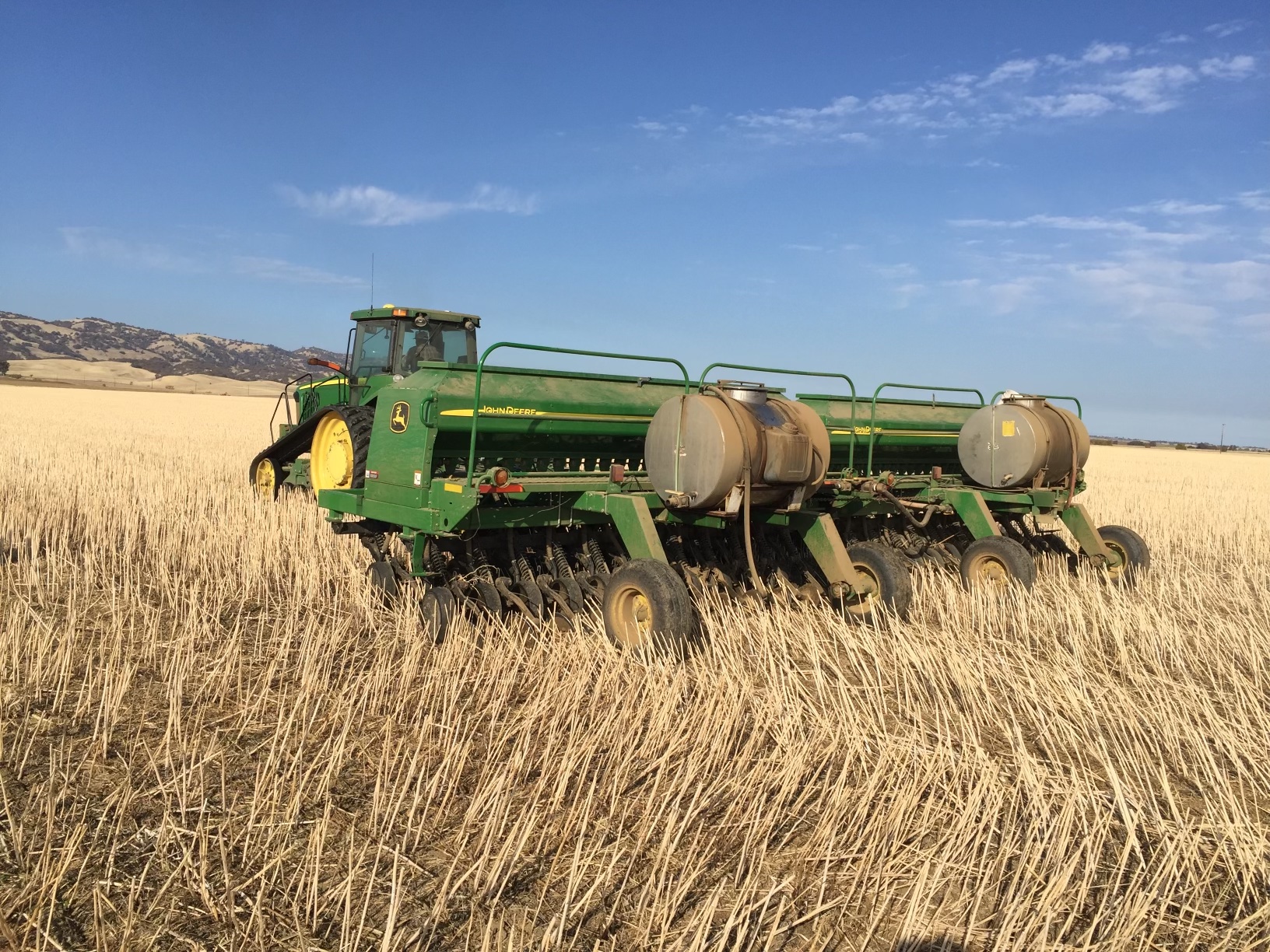
No-till grain drills in wheat field at Tule Farms in Woodland. Photo: Fritz Durst.
To revitalize the soil and maintain a productive farm, Durst began experimenting with no-till farming in the 1980s. In contrast to conventional tillage, no-till farming leaves the soil structure and any remaining organic material intact. Durst explains that organic materials, like straw and roots from the previous harvest, return nutrients to the soil and create a barrier that prevents erosion and improves water absorption.
“If you think about a raindrop…those droplets have a lot of energy in them and they’re beating on the soil, and they’re causing compaction on the surface. That’s why the soil seals up and won’t accept water,” Durst says. “So when I have a piece of standing straw there, [the rain] hits the piece of straw first and runs slowly into the ground,” he says.
According to Durst, organic matter such as standing straw also reduces evaporation by sheltering the soil from wind and sunlight. This allows him to manage year to year fluctuation in rainfall: he can cut back on irrigated water use in wet years and retain more water in dry years.
Tule Farms received a total of 5.5 inches of rainfall in 2021 — compared to 33 inches of rainfall in just the first six months of 2023. The USDA touts the benefits of no-till farming to climate resilience through increasing soil health, reducing erosion, and improving crop performance. Yet, no-till farming comes with its drawbacks and is only used on about 7% of farmland in California. Transitioning to no-till farming requires substantial upfront costs for new equipment and can make weed management more challenging. While Durst is willing to work through these challenges, his ability to maintain a sustainable farm requires reliable clients.
Tule Farms — like other local farms that share a commitment to regenerative agriculture, including Fully Belly Farm and Coke Farm — partners with local mills that seek sustainably farmed grains.
Claudia Carter, Executive Director of the California Wheat Commission, believes that compared to large mills, smaller, local operations are more adaptable. During the pandemic, for example, Carter saw small-scale food producers quickly pivot their operations to serve the needs of their local communities. As climate change threatens to bring similar disturbances, mills that can quickly distribute food locally or respond to a varied harvest can help build local resilience.
“A local flour mill that can support smaller areas and local grain producers will have a lot more flexibility,” Carter says. “[A local grain economy] can definitely have a quick effect on communities and feed them right away, rather than waiting on these big corporations to deliver a product in a disaster.”
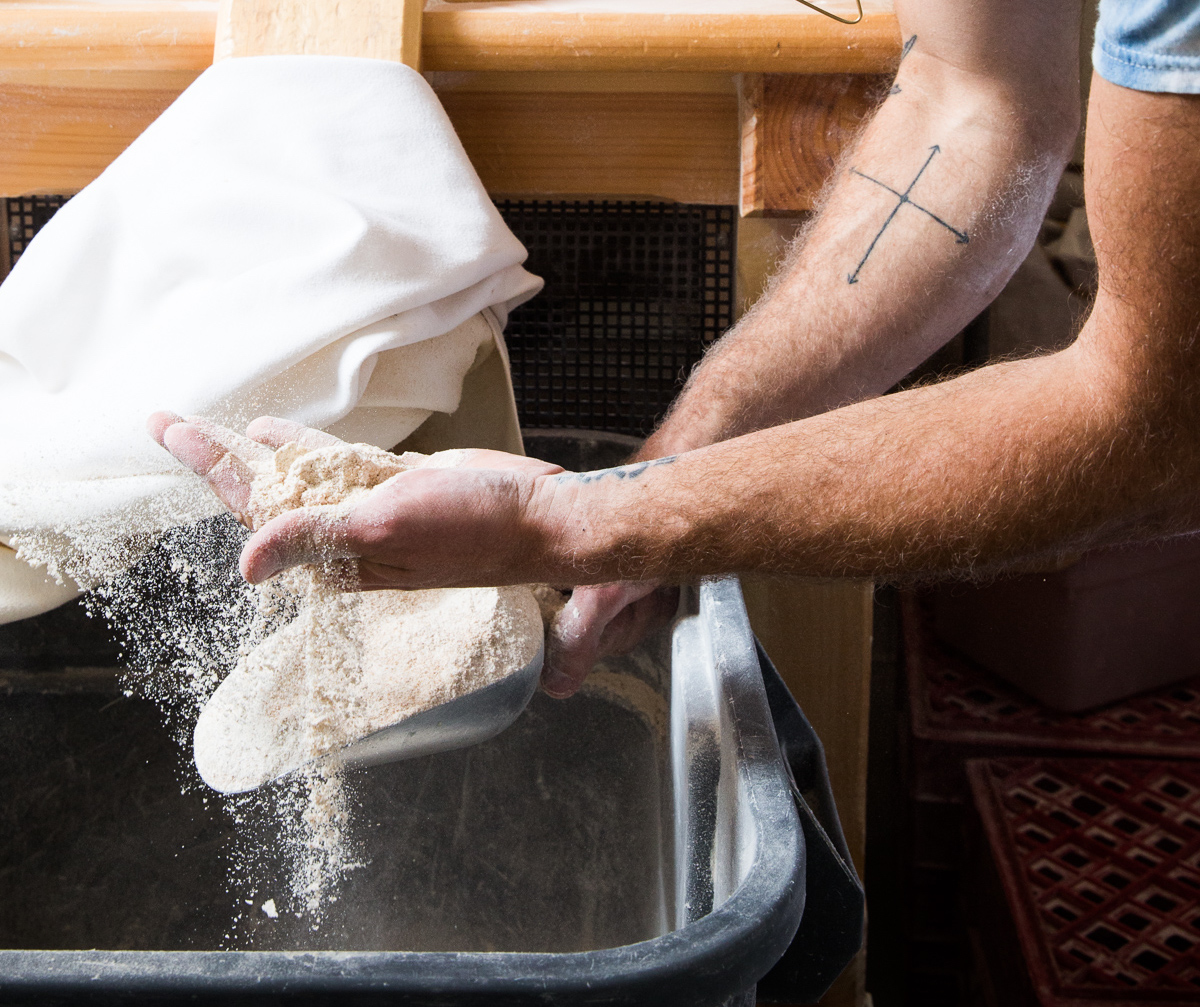
Working with freshly milled wheat. Photo: Erin Ekunkel.
The farmer, the baker, the grainfield (Durst, Baker, Tule Farms). Photo: Fritz Durst.
Durst has seen that flexibility first hand. The first year he produced wheat for Community Grains, a local mill and grain product producer, Durst’s wheat had an unusually low protein content. Protein is influenced by a number of factors including weather and precipitation during the growing season, but high protein content in wheat is essential for creating the thick crust and airy interior that is typical of artisanal breads. For Durst, a low protein harvest meant that many of his buyers would only use the wheat for animal feed and were thus offering low prices. Community Grains, however, was committed to paying a fair price and sold it wholesale to Josey Baker, founder of Josey Baker Bread and co-owner of The Mill in San Francisco.
Baker and his team at Josey Baker Bread mill wheat berries into flour in house. Using their artisanal bread-making expertise, they adjust their recipes to accommodate variability in the grain harvest each season. The team is accustomed to making judgment calls daily: even fluctuations in ambient temperature and humidity impact the bread making process. One batch of dough might require more water or mixing time than another, and these refinements result in relatively consistent bread despite external changes – including variations in the wheat caused by extreme climate events and natural disasters.
“We just trust that [Durst is] going to grow what is going to work well for him and that we’re going to be able to turn it into bread that our customers love,” Baker says. “It’s a really beautiful, trusting, supportive, relationship.”
Artisan bakeries not only accommodate variability, they actively seek diversity. Since many large farms monocrop single varieties of wheat, Baker can get more unique crops by working with farmers like Durst who grow multiple kinds of wheat.
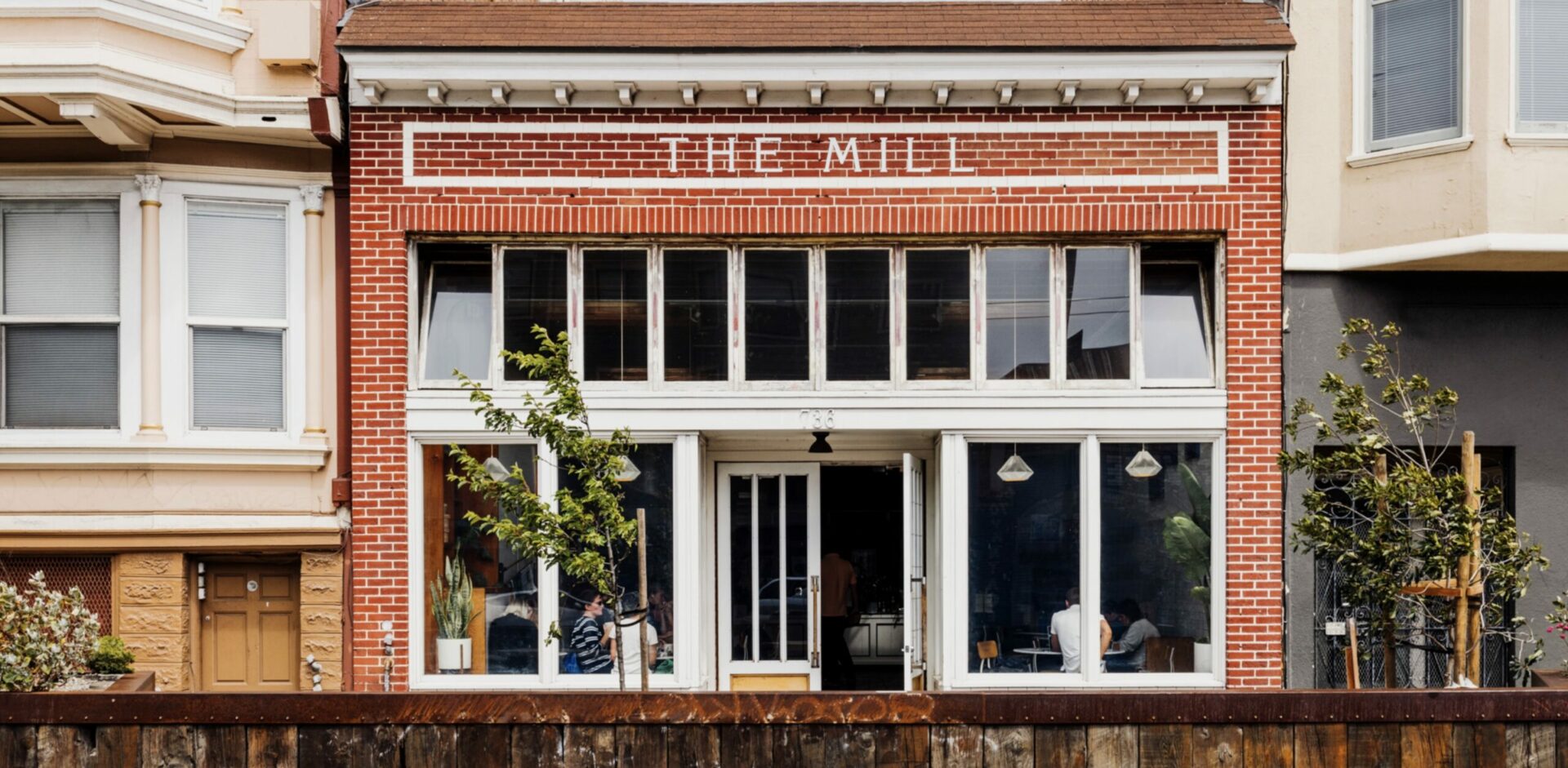
The Mill, where Josey Baker mills local grains and bakes locally-sourced bread. Photo: Josey Baker.
“Depending on what kind of wheat you use, the corresponding flour has different characteristics,” Baker says. “So you can use red wheat, which is what most whole wheat flour has been made of, or you can have [white] whole wheat flour… but it’s milder in flavor, a little milder in aroma, and less bitter.”
Baker’s ultimate goal is to make the best tasting bread possible, so he mills 100% whole wheat flour, which uses every part of the wheat berry and retains more of the flavor and nutrients that were cultivated on the farm. By working with farmers like Durst, he supports farming practices that cultivate healthy, nutrient dense soil. The benefits of healthy soil are seen in the nutritional quality of the crop, taste of the bread, and resilience of the entire system in a changing climate.
“[The bakeries] have seen some incredible taste results with some of my grains because they come from healthy soil,“ Durst says.






